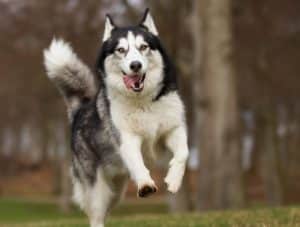How Much to Clone a Dog?- Your loving dog would not be there with you forever, and you know the truth very well. You know that cuddling, licking, jumping after seeing you won’t be there when you come back after a long day’s work.
Here’s a breakdown of dog cloning, including the process, benefits, cost, and considerations:
What is Dog Cloning?
- Scientific Replication: Creates a dog with identical DNA to the original.
- Not a Perfect Copy: Environment and upbringing still influence personality, health, and some physical traits (like markings).
The Process of Dog Cloning
- Genetic Preservation:
- Biopsy is taken for living dogs.
- Deceased dogs require immediate tissue preservation (refrigeration, not freezing).
- Cell Culture: Tissue samples are grown in a lab to create viable cells.
- Embryo Creation: Cloned cells are inserted into donor eggs.
- Implantation: Embryos are implanted into a surrogate mother dog.
- Birth: Cloned puppies are born.
Benefits of Dog Cloning
- Emotional Comfort: Preserves the bond with your beloved pet.
- No Time Limit: Cloning can be done later, as long as you’ve preserved the genetic material.
How to Choose a Dog Cloning Company
- Reputation: Look for a trustworthy company with a proven track record.
- Qualified Scientists: Ensure the team has expertise in animal cloning.
Important Considerations
- Similarity: Cloned dogs share DNA but may have slight variations in appearance and personality due to environmental factors.
- Health: Cloned dogs are generally healthy, but there is ongoing research into potential long-term effects.
- Cost: Dog cloning is expensive, typically around $50,000 USD.
Key Takeaways
- Dog Cloning Offers a Unique Option: While not for everyone, it allows for a strong genetic connection to a lost pet.
- Ethical Considerations: It’s important to weigh the ethical aspects of cloning alongside the potential benefits.
- Cost and Imperfect Replication: Be realistic about the cost involved and the fact that the cloned dog will not be an exact duplicate.
Understanding Dog Cloning
Letting your dog rest in peace is something you can’t accept from the bottom of your heart. Honestly, you never want your most loyal pal to leave you.
But vets offer you an opportunity where you can get a clone of your dog. This entire technique is completely based on scientific methods.
So before explaining the steps of dog cloning, let’s try to understand what dog cloning is simply.
Talking about dog cloning means you get the imitated copy of the donor dog, and the cloned one takes birth later.
The best part of the cloning process is that it won’t tamper with the gene. Also, it does not modify any of its basic features like the cloned one will reflect the same type of look, temperament, and intelligence level.
So if you want to get the cloned copy of your same dog, then you need to restore the dog’s gene using the genetic preservation technique.
But Now, suppose if your dog passes away and you forgot to gather the sample, then Don’t worry, you can simply do the mentioned steps below.
- Firstly just cover up your dog in a wet towel and refrigerate the body at a temperature ranging from two to eight degrees.
- Well, now suppose if you don’t have any refrigerating option for the body, then without wasting any time, simply get one of the dog’s ears and simply cover it up with a cloth that has been sterilized and store that in the freezer.
- Then one situation when you are unable to refrigerate the dog’s body, simply lay some cube of ice on top of the body and change the cubes once it melts away.
- In the meantime, just give a call to the dog cloning service providing company.
How to Clone a Dog?
Here in this section, we will discuss the step-by-step process of dog cloning. So follow the pointers below.
Step 1: Preserving the Gene
Well, the first thing you need to do is contact the dog company. Then any one of a representative from the concerned company will talk with you.
Now you state your requirement, saying that you want to clone your dog and you were just not prepared if he or she passed away suddenly.
According to experts, cloning is easily possible even when your pet has expired. But yes, in that case, you need to contact the respective company immediately, but as you delay, the chance of having the cloning done also reduces.
According to the experts, you should not freeze the body of your dog in a conventional freezer because that, to a great extent, has the chance of destroying the DNA rather than that you can put the dog’s body inside the refrigerator instead of the freezer.
Step 2: Storing the DNA
Now here comes the most important step: you need to get your dog’s DNA. Well, to do so, your vet will perform a biopsy to get the same. To do the biopsy, the vet will have to put the dog on sedation because that eases the task.8
For doing so, the doctor will take the samples of tissues by knifing two to three millimeters deep. Usually, they extract the tissue from beneath the belly only. You don’t have to worry about the effect because that is quite less. And your dog will be perfectly fine after one or two hours.
Once done, the doctor will put the tissue samples in cold storage of the concerned dog cloning company. In the meantime, a third-party vendor will also verify the authenticity of the DNA by sending the verification kit to a registered lab working on genetics. They will wait unless they receive the confirmation that the dog cloned posses the original DNA sample of the original version.
For animals who have already died, the cloning company will ask for large-sized samples.
Step 3: Cells Growth and Development
Now to grow the cells properly, the technician will sterilize the tissue sample and add some techniques to initiate the cell growth process. To start, they will sterilize with an authentic nutrient-based solution.
Now they will attach the cells to the incubator and set temperatures ranging from 99 to 101 degrees. Now they will keep a close watch on the progress.
What is the speed of the cell growth, and how are they multiplying?
Now, this growth spans from 72 hours to one month almost. One more thing is that situation and size of the sample will affect the growing frequency of the cells, and most of the tissue taken as a sample will take most of the time.
As the division of the cells starts, the growth can be seen gradually. Finally, the cells reach the stage when they can be injected into the donor’s egg.
Technicians usually store the cells in durable vials so they can be kept in tanks consisting of liquid nitrogen.
Benefits of Cloning a Dog
Cloning a dog might sound weird to many, but it has many benefits, especially for emotional and psychological causes.
Your Dog Will Be With You Forever
The first advantage of cloning your dog is that your favorite puppy will be with you forever. With this cloning, you can get a second chance to spend moments with him or her. Also, you can feed or play with your beloved dog.
No More Misery
Losing your loyal dog to heaven is something you can’t bear at all. Honestly, once you lose, you realize he or she was your best pal. Your life was more disciplined as long as he or she was with you. Also, playing or staying engaged with him made you more active.
On the whole, your life has meaning until he or she is there. So if you don’t want to lose that purpose, it is good to go for dog cloning.
Handy and Easy
Cloning does not come with validity, so you can have it any moment you want to have it. Like you can clone it in the future also, but at the same time, don’t forget to refrigerate the genetic item of the dog. You can have it when you are prepared to have it.
How to Choose a Dog Cloning Company?
In this segment, we will brief you on the qualities you should consider while searching for a dog cloning company.
Trustworthy and Authentic
The first quality you should consider is that the company must be reliable. They should work committedly, and they should make sure that the effort should be true to their words.
Qualified Scientists
The next thing is that look for their team members. Remember, a professional dog cloning company will ensure that the scientists are experienced and proficient.
Also, check out the credential, like whether they have carried a profound research work particularly based on dog’s genes or not.
How Much Similar is the Cloned Dog to the Exact One?
Note that the animal which has been cloned has a similar gene to that of the exact dog. But yes, a bit of difference can be found in how they express the gene. For example, the body marks or the color of the eye can differ.
Well, apart from that, you will also find a variation in terms of personality. Note that the dog’s personality always depends on where he is born and the ambiance he originally belonged to. Certainly, imitating the same personality is not easy.
Will the Cloned Dog Be Healthy?
It is known that the reproductive system of dogs is intricate so cloning them is not a cakewalk. The moment the dogs have been cloned, scientists fear whether the cloned dog will get old faster than the naturally born dogs. But yes, the cloning process is overall healthy.
How Much to Clone a Dog?
Well, now you might be wondering about the exact price of cloning a dog. Then as per the latest pricing details, you need to pay a dollar of 50,000.
Remember that most cloning companies ask for an initial payment, which is half of the said amount, to start the technique, and later, you need to pay half once the work is done.
The above said tells how much to clone a dog. But at the same time, you need to note all the details about the cling process and its advantages.







